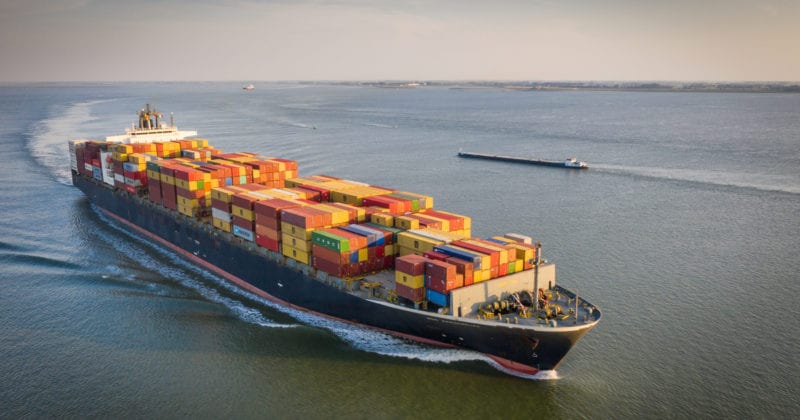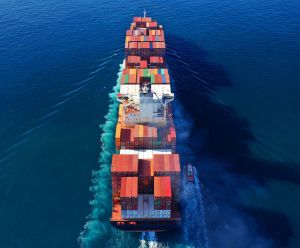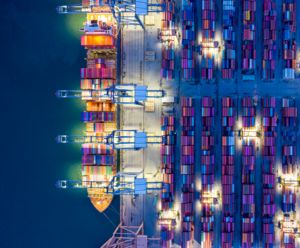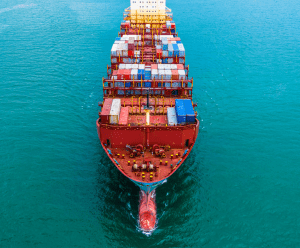
China’s Golden Week is over. What happens next for ocean freight?

In the last decade, China’s Golden Week holiday every October has been regarded as the unofficial end to the traditional East-West summer peak season for container shipping.
Factory closures in China, and blank sailings from carriers for the week-long festival, are routinely preceded by a mini-spike in export demand and freight rates, as retailers ship early ahead of the winter holiday season. After Golden Week, European and U.S. volumes usually drop off for the rest of the year, taking spot freight rates on head-haul routes with them.
But freight rates in 2020 have seen more than the usual surge ahead of Golden Week, with trans-Pacific spot rates nearly triple the levels of 2019 through September and remaining bullish right up to the start of Golden Week on October 1.
At the end of September, average spot rates on the Shanghai-Rotterdam (+85 percent), Shanghai-Los Angeles (+197 percent), and Shanghai-New York (+103 percent) routes were higher than a year earlier, according to shipping consultancy Drewry.
Golden Week rush
Reports suggest that many factories in China did not fully close for Golden Week, as they attempted to clear order backlogs.
Meanwhile, container lines had their shipment backlogs to clear. Encouraged by warning shots from regulators concerned at bullish freight rates and supply chain disruption — especially on the trans-Pacific trade where equipment shortages are acute — most carriers shelved plans to blank sailings during Golden Week.
Instead, the container trade moved up a gear with even more capacity thrown into the mix in late September. “Last month’s trans-Pacific capacity was 26 percent higher compared to May 2020 and 6.7 percent higher than during September 2019,” noted Dominique von Orelli, Global Head, Ocean Freight, DHL Global Forwarding, in DHL’s October Ocean Freight Market Update.
“Average weekly capacity between Asia and Europe has risen 17.6 percent compared to May and is only 4 percent under last year’s figure,” added von Orelli.
As a result, the inactive container ship fleet as of 28 September represented just 2.2 percent of total capacity, according to container shipping analyst firm Alphaliner.
The extra loaders drafted onto the major East-West trades resulted in no inactive vessels of above 6,000 twenty-foot equivalent unit (TEU) capacity, except for those locked in yards undergoing scrubber retrofits, repairs, or under arrest.
In addition, several large ships were hastened out of yards as soon as their scrubber retrofits were completed to fill sailing gaps in regular services or perform extra sailings, Alphaliner revealed.
Will container shipping demand continue?
What happens after the Golden Week holidays is now the big question for those in ocean freight. Has demand been so high because retailers and consumers are planning for further lockdowns? Or has there been a fundamental shift in demand as consumers — unable to travel or confined to home — shift expenditure to new products?
A new report from investment bank Jefferies sheds some light. It claims Golden Week did not signal the end of the inventory restocking cycle this year. Rather, Jefferies’ Chief Economist Aneta Markowska noted, “We are just at the beginning of what is likely to be one of the biggest restocking cycles — if not the biggest inventory restocking cycle — in U.S. history.”
While some of the current rebound in goods demand is due to precautionary inventory-building, demand is also expanding in the U.S. on the back of supportive fiscal policy and a switch in expenditure from services to goods. As a result, the bank believes the current post-recession recovery in the goods market is a long way from being over and could last through the first half of 2021, at least in North America.
DHL decarbonizes ‘less-than-container’ load ocean freight shipments
DHL decarbonizes ‘less-than-container’ load ocean freight shipments
DHL Global Forwarding announced it would neutralize the carbon emissions of all less-than-container load (LCL) ocean freight shipments from January 1, 2021.
The move is part of DHL’s commitment to leading the transition toward clean and sustainable sea freight transport. CO2 compensation for all LCL shipments will be achieved by using maritime biofuels utilizing existing and new partnerships.
Under the initiative, heavy oil, which would ordinarily be used, is replaced with sustainable marine biofuel onboard a preselected container vessel to ensure true carbon neutralization is achieved.
“The shipping business is often viewed as something of a laggard when it comes to embracing change. However, when it comes to decarbonization, sustainable fuels are a clear solution paving the way for the sector to step up climate protection and sustainability efforts,” said Kelvin Leung, CEO, DHL Global Forwarding Asia Pacific.
Given that so many U.S. consumer products are produced in Asia, the current and potential boosts for container shipping demand are obvious.
In Europe, economic recovery is also tending to favor goods over services. The latest detailed European sector Purchasing Manager Index (PMI) from data firm IHS Markit indicated more substantial output increases in key manufacturing activities in September. This is led by automobiles & auto parts, household & personal use products, machinery & equipment, and chemicals.
Another factor that is expected to influence ocean freight markets in the coming months is equipment shortages.
“At present, there are widespread shortages of containers — especially high cube boxes — across Asia, while sourcing chassis in the U.S. is proving challenging. And there is little sign of this supply chain blockage improving in the short-term,” explained Leung.
Industry sources have indicated that the availability of 20ft containers at Asian ports is set to plummet to new lows in the coming weeks. Moreover, Chinese container factories are now sold out until the middle of Q1, 2021.
Tapering of rates and volumes is still expected this month. However, analysts expect the traditional seasonal fourth quarter downturn for container shipping to be far less severe this year, but with the likely prospect of higher container shipping contract rates in 2021.
MORE FROM THIS COLLECTION











 English
English